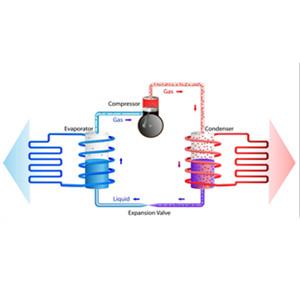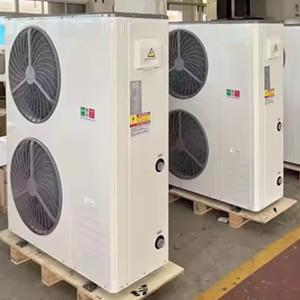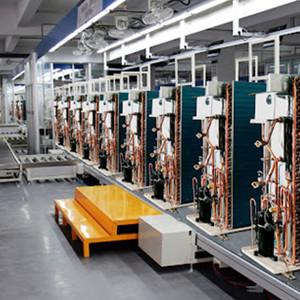Air Source Heat Pump Applications
Air Source Heat Pump (ASHP)
In this article, we will review:
1. What is an Air Source Heat Pump (ASHP)?
2. How does ASHP work?
3. How does ASHP reduce greenhouse gas emissions (greenhouse gases)?
4. How do you use and apply ASHP at home?
What is ASHP?
An air source heat pump (ASHP) is a method of removing heat from the outside air inside a building (see Wikipedia)
Classification of ASHP?
Common heat pump examples include: ductless mini-split, cassette
Type, traditional central unit with ducted room air handler. They look like your central air conditioner: 1. Outdoor 2. Indoor
How does ASHP work?
1. The refrigerant fluid moves heat between the outdoor air and the indoor air.
2. It uses the same technology as other homes (vapor compression cycle) windows or appliances such as central air conditioners, refrigerators or ice makers.
3. Electricity drives the compressor; most of the energy comes instead
From the "free heat" present in the outdoor air despite its temperature.
1.75% of the heat energy comes from the cold outside air.
2. Cold air evaporates low pressure (very cold) refrigerant
3. The compressor pressurizes the refrigerant, making it hot.
4. The hot refrigerant heats the indoor air circulated by the indoor fan.

How does ASHP reduce greenhouse gas (GHG) emissions?
• Boilers and furnaces emit carbon dioxide when they burn oil or natural gas. Most home heating systems are around 75% - 80% efficient. Newer condensing gas boilers may be more than 90% efficient.
• The efficiency of the ASHP is called the coefficient
performance (COP), or heating season performance. Factor (HSPF)
• COP = Energy Out / Energy In = 2.9 or 290% Efficiency!
• HSPF = hourly energy output in Btu / energy input in watts
• Typical HSPF values range from 9.0 to as high as 13.6
• HSPF of 10 = 293% efficiency.
For every 1000 BTU of thermal energy output, here are the greenhouse gases from each source:
• 80% efficient gas boiler or furnace: 0.146 lbs CO2
• 80% Efficient Oil Boiler or Furnace: 0.205 lbs CO2
• Electric ASHP with HSPF of 10 (290% efficiency):
0.0598 lbs CO2 (based on local power emission factor)
• For the heat they provide, ASHP can reduce your greenhouse gas emissions by approximately 60%.
• For a typical household, 3.6 to 4.1 metric tons of carbon dioxide is avoided per year.
How to apply for ASHP at your home
1. If you force hot air or central air conditioning, ASHP will directly replace it.
2. But hot water or steam baseboard systems need to be replaced, or act as
Complementary to room-based ASHPs, these ASHPs can also be used as air conditioning units.
3. There are some air-to-water heat pumps, but they have limitations.
4. Note: Not all ASHPs are “cold climate” capable. Others may have electric resistance auxiliary heaters. Cold climate units can cost $1,000 to $2,000 more.
Design Notes:
1. Wall-mounted, cassette or ducted indoor unit.
2. Avoid installing ducted ASHP in ventilated attics and confined spaces.
3. In existing dwellings, use the boiler as a backup or auxiliary heat source.
4. True cold climate ASHP keeps 100% capacity down to 5oF.
5. To make hot water, also consider using an ASHP water heater.
• While your electricity bill will increase, ASHP will generally save on oil bill heat, but not necessarily against gas heat. Various factors (electric heating system, oil/gas/electricity pricing, heat pump COP) need to be weighed.
• The cost of an ASHP can be as low as about $4,000 per room, or about $18,000 for a whole house plumbing central system. Be sure to take advantage of any utilities or other incentives.
• Not all ASHPs are “very” cold climate capable. Review proposals carefully equipped. Look for trade names like "hyper-heat" and "Lowambient" operations.
• Note that ASHP requires a "defrost" between heating cycles. All ASHPs have this limitation and may cause brief interruptions in heating.
Other problems
If you have further questions, please contact us. Our ASHP experts will give you the most professional advice.





